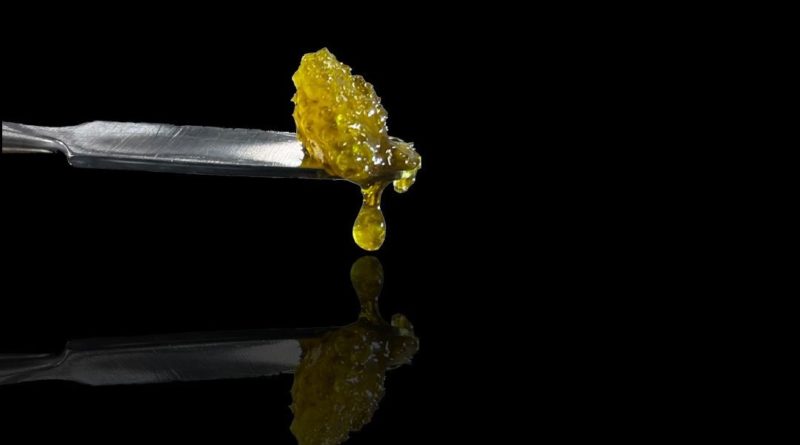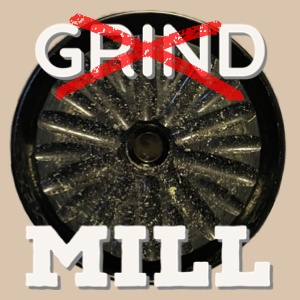Trichome TJ on cannabis extraction artist best practices
Have you ever wondered why there are certain cultivars that seem underrepresented (ex: haze) when it comes to concentrates while there are others that seem overrepresented (ex: GMO)? How does one exactly read the extraction potential of a given bag of cannabis flower anyways?
A lot of variables go into making concentrates and determining how they are presented to consumers. Generally speaking, those variables can be broken down to four interlinking areas: cultivar selection, harvest, extraction, and post processing.
It’s obviously tough to keep up with the ever changing demands of cannabis consumers – no matter what market you’re in. That’s exactly where a new breed of cannabis extraction consultants have carved a niche for themselves in the budding cannabis industry.
Interview with extraction artist Trichome TJ
I spoke with Trichome TJ to chat about what kind of thought process extraction artists go through when they are brought on to help cannabis companies. Often, extraction consultants are contracted at a point where cultivar selection and harvest have already been completed, leaving only extraction and post processing processes available as dials to hone in.
Say a cannabis company has a bunch of flower that they want to extract, how do they decide what the next steps forward are? Consultants like TJ focus on the quality of the material and ask:
“What are the qualitative features of the input?”
The input matters. TJ explained:
“Every cultivar is given an outcome based on its characteristics. For instance, not every cultivar can be produced into THCa diamonds. There’s just some cultivars you’d never economically be able to push into THCa diamonds. Whereas another cultivar might be better. But that one cultivar that can’t be turned into diamonds might make a delicious sauce recipe.”
So say he’s working with a new cultivar, the first thing to do would be to run some test batches to see how it looks, smells, smokes, vapes, tastes, etc.
Sometimes companies approach him and want to create a certain product, but aren’t sure if the cannabis they have is suitable. This initial test process will inform the total possible number of outcomes. He repeated his steps:
“Look at how it is, mark the successes and the failures and see how the failures can be changed whether in post processing, extraction, harvest, or cultivar selection. “
That’s why he checks on the consistency of the rosin as it is being pressed. The trained eye will notice things like the amount of air bubbles, how much the fresh press is buddering up or nucleating, and those hints can inform its future.
The look and taste of the product after extraction might also determine whether the extract ends up in a Kalyx as a standalone dabbing product, put into a vape pod or cartridge, homogenized or snaked into pre-rolls, used for topicals, or mixed in with edibles. All depending on a variety of factors like terpene content, THCa content, and many more variables. TJ explained how color could affect the end use of an extract:
“Vape cart tech is going to be more stringent than edible tech when it comes to color. For edibles, all that you care about is that it’s fully decarbed, you don’t need to meet certain color requirements.”
Is there a best type of cannabis extraction?
It’s a hotly debated question, and one that does not have the same answer depending on the particular scenario of whoever asks it.
“I prefer to do solventless, I think it’s the most skilled of the group when it comes to extraction methods. It takes the most background knowledge.”
What kind of background knowledge? All of it. From the cultivar selection to the harvest to the extraction itself and post processing, knowing how to turn the dials and which direction to turn them in is a skill only developed by experience. But first, an aside.
Is CO2 distillate solventless?
We touched on a particular nerve during our conversation. After talking about his preferred method of extraction, I went on to ask about his least favorite extraction method, and he answered readily with CO2.
“It doesn’t make sense from a business perspective. It’s the one technology that was put into the industry with the most misleading information possible. For instance, when you get CO2 distillate that is marketed as solventless it’s technically true…
But after the initial CO2 extraction process, they add ethanol to delipidize it. So the extraction method was initially solvent free, but the post processing process does use solvents to remove the fats and lipids from the crude oil.”
Even the beloved term “Solventless” can be misleading in the wrong hands.
On the other end of the solventless discussion
Are dry sift and charas gonna be represented?
I asked TJ about his thoughts on whether more traditional “extraction” methods like dry sift or rubbing had a place in the American cannabis market. He responded affirmatively.
“There’s a place for every extraction method.
As we see more outdoor operations open up, we’ll see more traditional techniques including aging.
Right now there’s not really aged cannabis – which is another thing associated with the older techniques. Once you see state lines open up, you’ll see more of that craft-as-a-unique-differentiator come out.”
Fire in, Fire out
I asked him to name a particular favorite extraction consultation project. He declined and gave me this cryptic, but useful answer instead:
“Anyone that has an associated grow is usually most fun to work with because they can affect the most change to the input to get that fire out.”
Fire in, fire out. As they say. I can see how having no control over the quality of inputs could be frustrating.
Outdoor vs Indoor flower: what’s better for extracts?
This conversation is a frequent one. TJ has frequently broadened my own thinking on this subject with his emphasis on user outcomes. Succinctly, he gave me this definitive answer:
“The challenge with sungrown is that unless you have a good farmer and a good area where sungrown can create a better product for a connoisseur. However, with the market being mainly not connoisseurs, that’s why indoor is not preferred.
People buy based on color when it comes to concentrate. And generally, outdoor products come out darker than indoor products. Not saying you can’t get pure white outdoor concentrate, but it’s just not as common.
For commercial purposes, using indoor flower for solventless is ultimately the best way to go when it comes to creating a universally marketable and reproducible product across the United States. However, when it comes to the small batch and the top 1% of the market in terms of education and demand, sungrown flower and the concentrates made from it shine through. That holds true across all concentrates and extraction methods.”
Repeat after me again: “Fire in, fire out.” TJ stated simply:
“If it’s not there to start with, I can’t produce it in the end product.”
So why are there are so many distillate gummies and not enough rosin gummies?
Any conversation about rosin would be incomplete without talking about the new top tier of edibles that is rosin infused gummies. Though as described later, the products marked “solventless” infused edibles might bear further research.
Since the most consumed edible on the market is gummies, by a lot. TJ had some tips for the growing line of extract companies turned gummy makers given FDA’s current guidelines:
“Shape is the way to be unique in the market space. You can’t appeal to children, so you can’t do animals or fruits or stuff like that. We end up seeing mostly geometric shapes.”
When it comes to whether to use pectin or gelatin, TJ was adamant:
“Unless you’re doing it for fun, it should always be pectin at the commercial level.”
According to the scientific literature, pectin is superior to gelatin when used properly. TJ explained:
“Once it hits its pot life, it’s done. But gelatin is more forgiving in that sense. Using pectin creates a more shelf stable product that won’t be destroyed by the consumer leaving the product in their car. Pectin can survive up to 180 degrees. The sugar might sweat but the shapes will keep.”
Cannabis agrotourism is the future
To finish up, I asked him if there were any hot trends in the cannabis space that readers should be aware of. He answered me with one word:
“Agrotourism.”
Pressed for more, he left me with something to chew on:
“Single source craft products and showing off that single source is the next frontier. It’s the microbrewery model, but they grow their own hops – which is exactly what the tip top brewers do to control quality.
Even multi state organizations are trying to mimic that same style but in a larger format. There’s also a trend towards cleaner production practices, environmentally friendly practices, and more.”
Having a proper top shelf product might no longer be enough of a differentiator in the future that TJ envisions. As regulations continually evolve to allow curious consumers to visit the place in which their favorite cannabis is grown, to see for themselves how terroir is expressed in their flower or extract, cannabis agrotourism is sure to flourish.
Founder of The Highest Critic
Unpaid /r/trees mod
Certified Ganjier
Kine bud enthusiast


